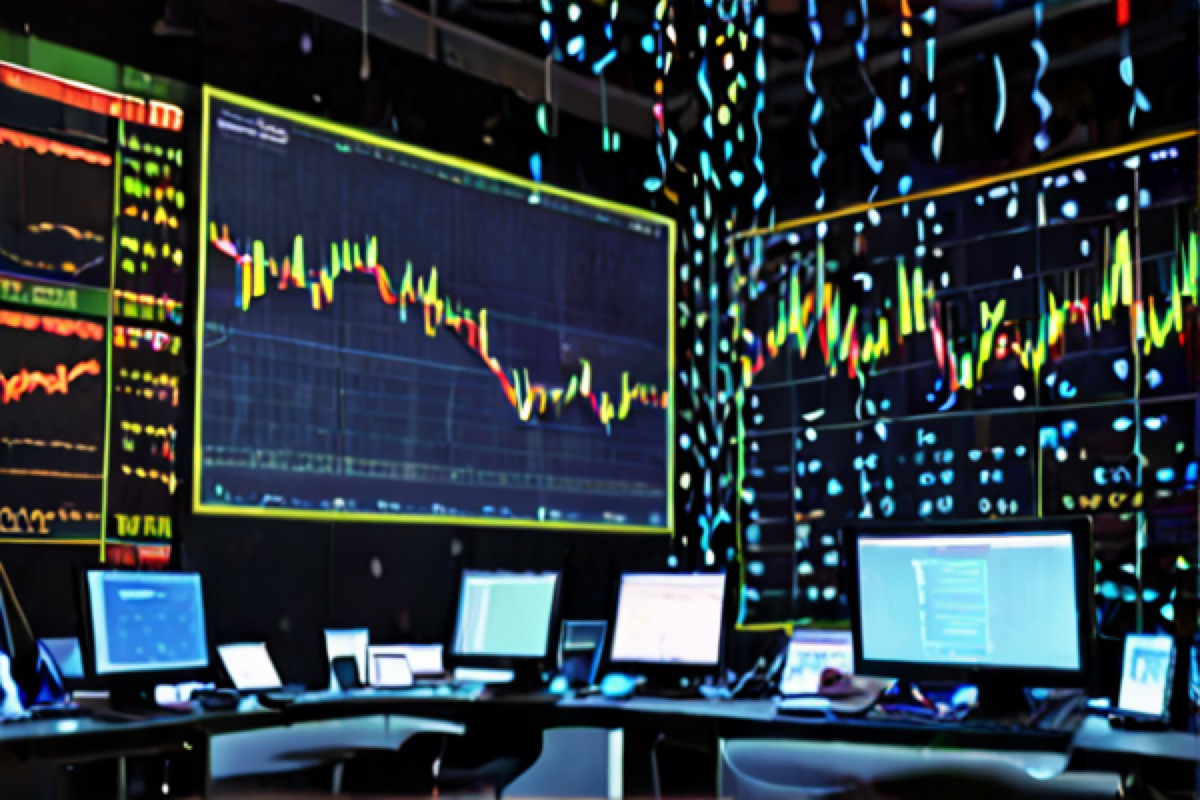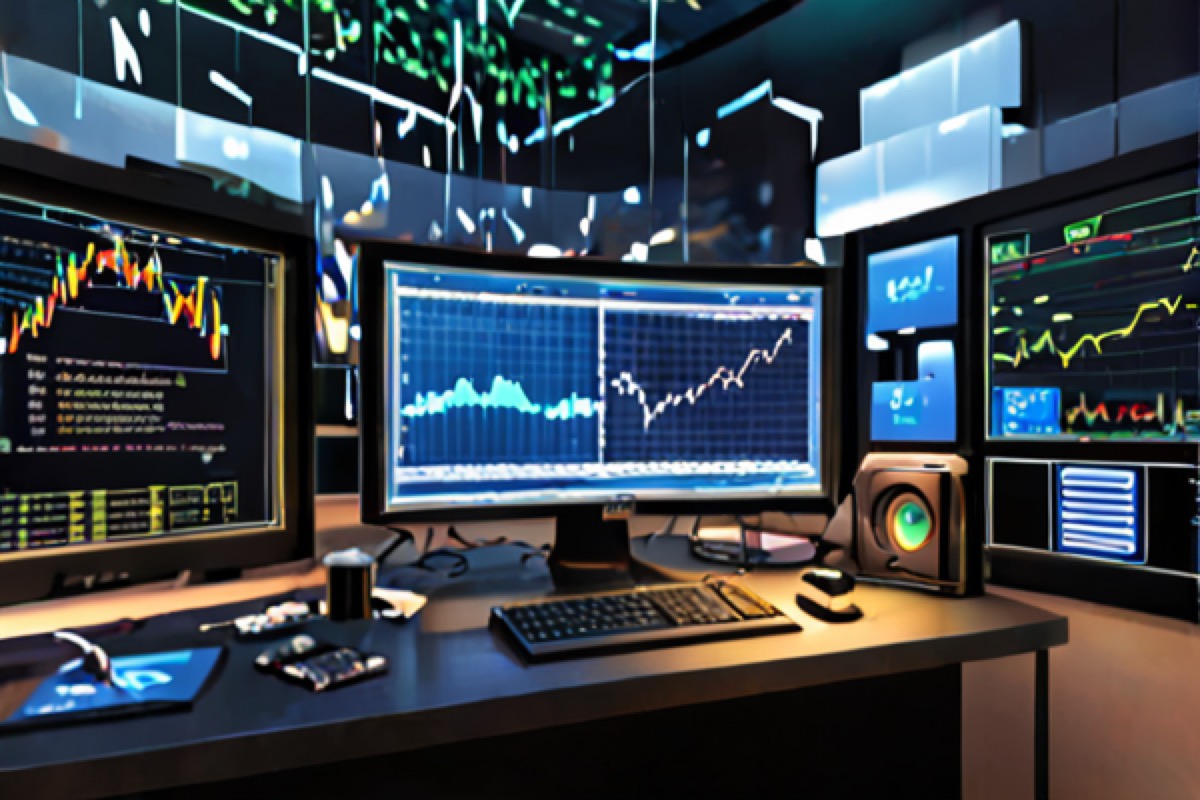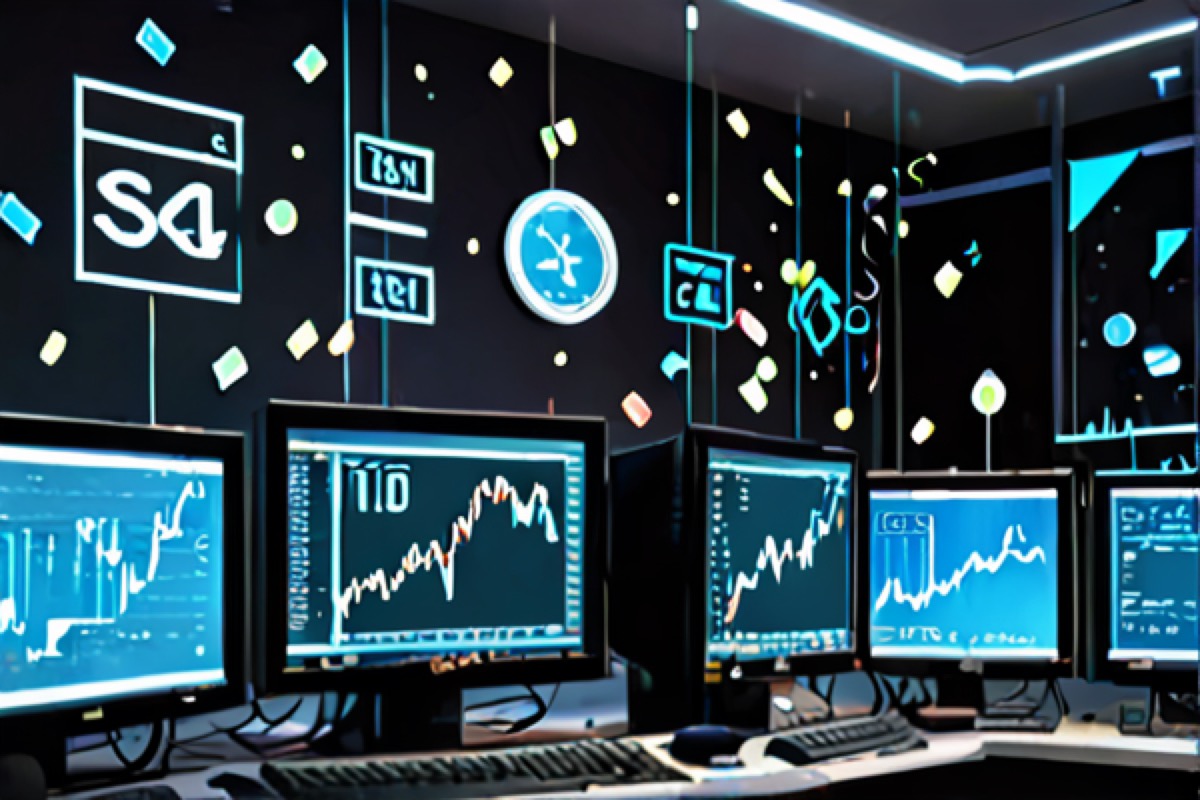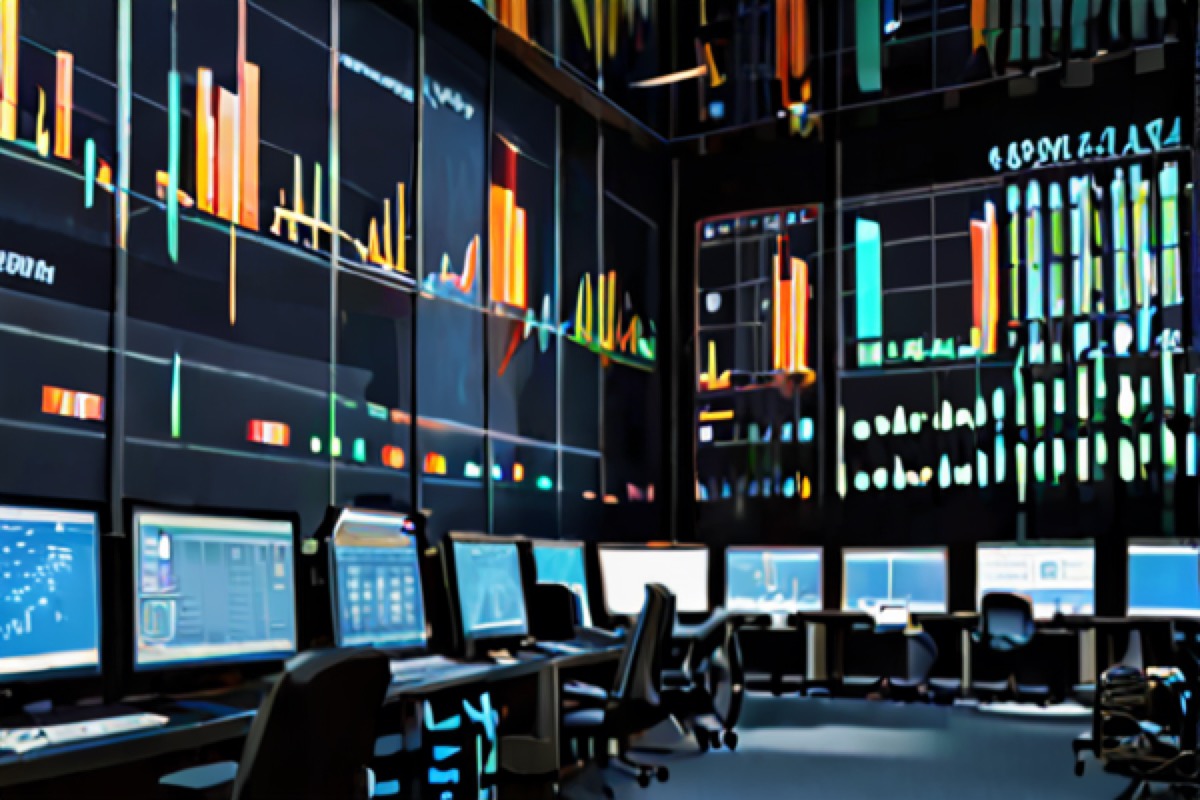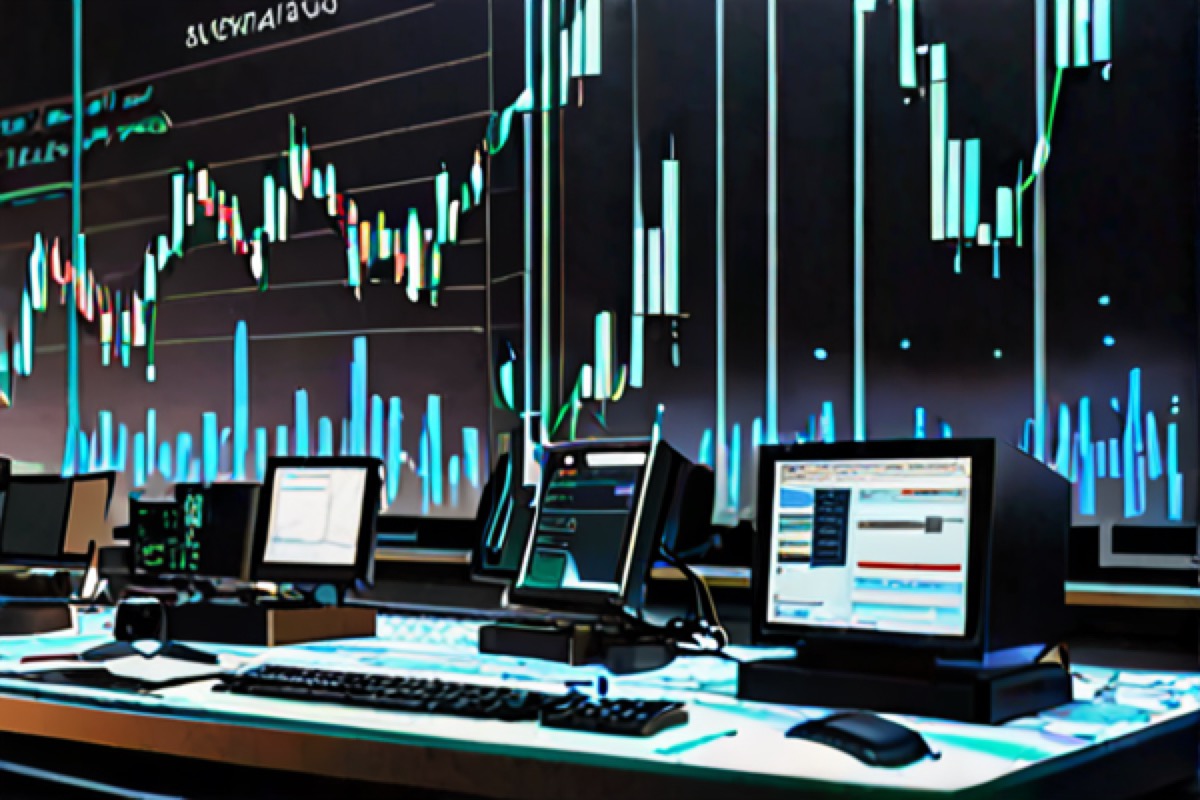Trading Room Introduction
A trading room, also known as the front office, is a hub where traders engage in financial market activities. Synonymous terms include “dealing room” and “trading floor,” the latter influenced by the concept of open outcry in stock exchanges. With the advent of electronic trading, trading rooms have become symbolic spaces representing financial markets, often being the first within financial institutions to adopt cutting-edge technologies.
Universities and business schools often house “trading labs” or “finance labs,” which are specialized computer labs that mimic real trading room environments. in this article, we’ll explain the history of Trading Rooms.
Table of Contents

Contemporary Evolution: Virtual Trading Chat Rooms
In recent years, the concept of the trading room has undergone a digital transformation, particularly in the retail trading world. This evolution is epitomized by the advent of virtual trading chat rooms. These digital platforms replicate the communal and interactive aspects of traditional trading rooms, allowing individual traders to collaborate, share strategies, and discuss market trends in real-time, regardless of their physical location.
These virtual rooms have democratized access to collaborative trading environments, traditionally the domain of professional trading floors. They offer a blend of social networking and market analysis, providing a space for both novice and experienced traders to learn, exchange ideas, and potentially enhance their trading decisions. This phenomenon reflects the broader trend of digitalization in finance, where technology bridges the gap between professional and retail participants, offering tools and platforms that were once exclusive to institutional settings.
Interested In Learning More?
Historical Context
Prior to the 1960s or 1970s, banks’ capital market operations were divided across various departments, including money markets, foreign exchange, and bond markets, often located at different sites. The centralization of these teams onto a single site aimed to enhance efficient market information dissemination, foster collaborative analysis of market trends, and improve coordination in client services.
Evolution in the United States
The concept of trading rooms first emerged in the United States with major brokers like Morgan Stanley. The advent of NASDAQ in 1971 necessitated equity trading desks, while the burgeoning secondary market for federal debt products called for bond trading desks.
Expansion in Europe
Between 1982 and 1987, trading rooms proliferated in Europe, spurred by financial market reforms in the United Kingdom and France. The UK’s ‘Big Bang’ deregulation led to the merger of stockbroker and stockjobber roles and attracted US investment banks to establish trading rooms in London. Concurrently, in France, deregulatory measures by Minister Pierre Bérégovoy between 1984 and 1986 fostered the development of money-market instruments, futures, and options markets, necessitating dedicated trading spaces.

Business Functions
Trading rooms serve two primary business functions:
- Trading and arbitrage, primarily in investment banks and brokerage firms (“sell side”).
- Portfolio management for asset management companies and institutional investors (“buy side”).
Investment banks were the pioneers in establishing trading rooms, followed by large asset-management firms. The business model influences the trading room’s organizational structure and technology infrastructure.
Organization and Structure
Trading rooms are organized into “desks” specialized in different products or market segments (equities, short-term, long-term, options, etc.), often occupying a large, open-plan space.
In investment banks, the distinction is typically made between traders, who aim to optimize prices and anticipate market trends, and market-makers, who provide standard term trades. Sales teams, focusing on customer relationships, tailor deals to corporate clients’ specific needs.
Some institutions, like UBS or Deutsche Bank, organize their trading rooms around customer segments. Others may host offshore traders serving different time zones, employing a rolling book system for continuous market coverage.
The presence of financial engineers and dedicated software developers alongside traders is increasingly common, particularly in institutions with rapid application development (RAD) teams. Compliance officers are also a recent addition, ensuring adherence to legal standards and conduct codes.
Unlike the trading room, the middle and back offices are usually located separately.
In asset management firms, traders liaise with brokers (investment banks’ sales), and asset managers handle portfolio or fund management. Some firms choose to outsource their trading desks.
Infrastructure Development
The expansion of trading businesses in the 1980s and 1990s necessitated larger, technologically advanced trading rooms. This led to some institutions relocating their trading rooms to new areas, equipped to handle the sophisticated IT and telephony requirements. Examples include UBS Warburg’s trading room in Stamford and Société Générale’s Basalte building, uniquely designed for trading activities.
Conclusion
In summary, the evolution of trading rooms from their traditional, floor-based origins to the modern, digitally-enhanced platforms of today reflects the dynamic nature of financial markets. Whether it’s the bustling, collaborative environment of institutional trading floors or the interactive, virtual spaces of online trading chat rooms like OneOption, these hubs continue to be pivotal in shaping trading strategies and market movements. They embody the fusion of cutting-edge technology, financial expertise, and community dynamics, offering traders an unparalleled environment for market engagement. As the financial world continues to evolve, trading rooms, both physical and virtual, will undoubtedly adapt and innovate, remaining at the forefront of trading evolution.
Interested In Learning More?
The OneOption Trading Chat Room: A Hub for Precision and Productivity
Introduction to the Chat Room
Join the web’s most laser-focused chat room at OneOption. Our platform is designed for serious traders who demand precision and productivity. Members are required to post their trade entries and exits promptly, ensuring that all shared trade ideas adhere strictly to our proven system. The chat room culture is one of no-nonsense efficiency: we do not tolerate random guesses or irrelevant chatter. Here, every trade posted is backed by a clear rationale, instantly recognizable upon chart inspection. If a focused, serious trading environment is what you’re after, look no further.
Learning from the Best
Our chat room is not just a platform; it’s a learning hub where some of the best professional traders in the industry converge. These experts, easily identified by their red usernames, are not employees but passionate system aficionados. Observing them dissect market opportunities is akin to watching a master chef at work. Their presence is an invaluable resource, elevating the trading experience for all members.
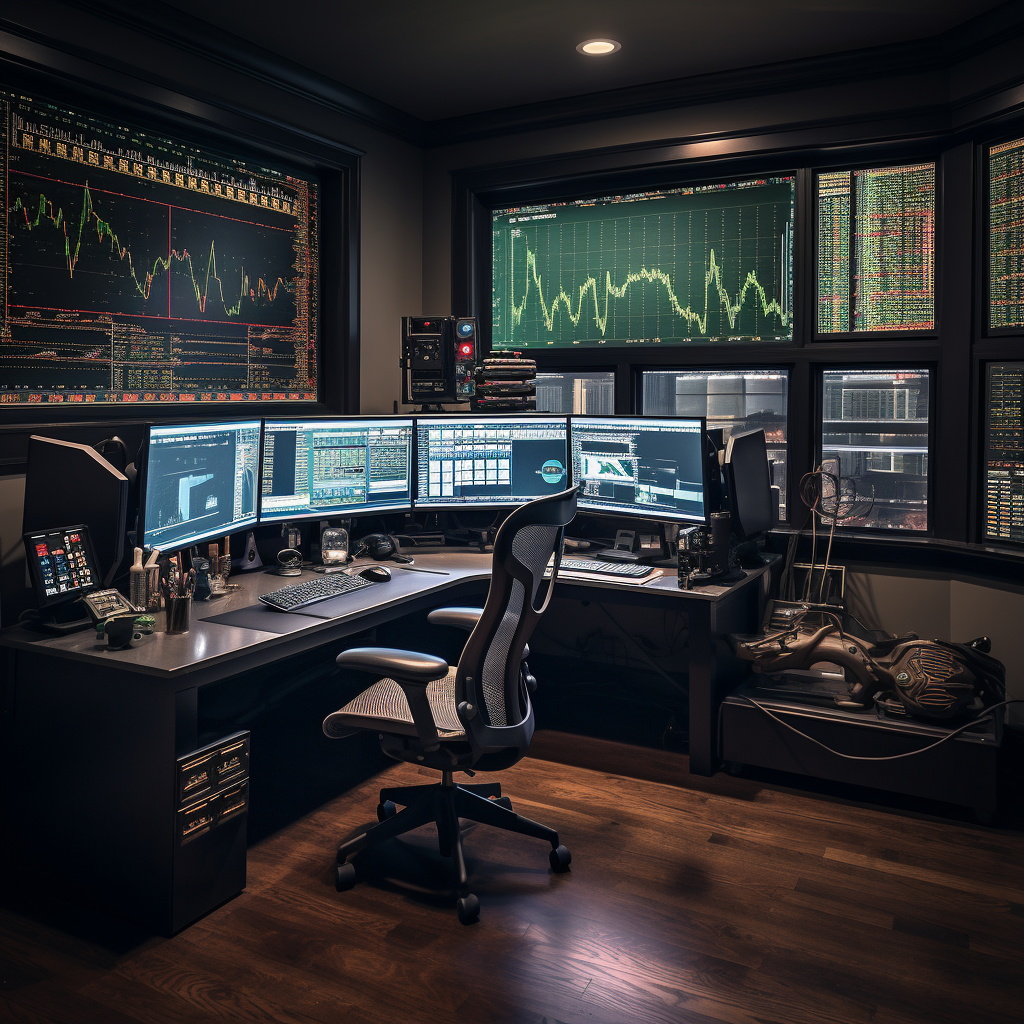
Power Up with Advanced Features
Embrace a modern trading experience with OneOption’s advanced chat room features. Our Consolidated Trade Log is a game-changer, allowing for effortless tracking and review of trades. This tool filters out the noise, focusing exclusively on messages with trade entries or exits. It’s an efficient way to keep tabs on fellow members’ trades, enhancing your focus and reducing information overload during market hours. You can sort trades by trader, enabling thorough analysis and comparison to refine your trading strategies.
The Benefits of Joining Our Community
- Trust: Our chat room is a bastion of reliability, where users with red and orange names consistently share high-quality trades.
- Transparency: Timely postings of both entries and exits provide a clear picture of trading activities, encompassing both successes and learning experiences.
- Efficiency: Our focused verbiage cuts to the chase, ensuring that the basis for each trade is clear and concise.
- Knowledge: Outside market hours, our chat room transforms into a forum for questions and strategy discussions.
- Depth: Dive deep into our archives, searchable by symbol/topic or user, to explore the wealth of information available.
- Control: Tailor your experience by choosing which users to follow, filtering out distractions.
- Mobile: Designed with mobile users in mind, our interface allows quick access to vital trade information.
- Unity: Experience the strength of a community that freely shares trade ideas and insights.
Learning and Adapting from Trades
The chat room’s search feature is a powerful tool for post-trade analysis. It allows members to review trades, study the corresponding charts, and discern the patterns that made each trade compelling. This practice is key to evolving as a trader.
Staying Market-Focused
Every trading day begins with comprehensive market commentary, blending fundamental and technical analysis to guide your swing and day trading strategies. The chat room features real-time technical analysis, with SPY trade signals visible across various timeframes. Our goal is to ensure you’re always aligned with the market’s pulse.
Join Our Team
Experience the OneOption difference first-hand with a free trial. Witness the effectiveness of our system and the success of our members, many of whom are on the cusp of significant breakthroughs. This system is learnable, and our community started just where you are now. We look forward to welcoming you to our team.


